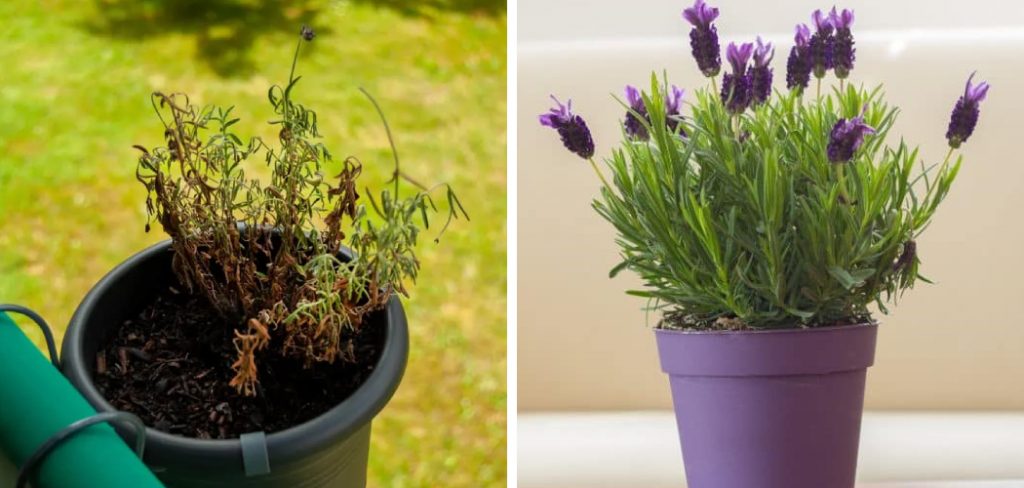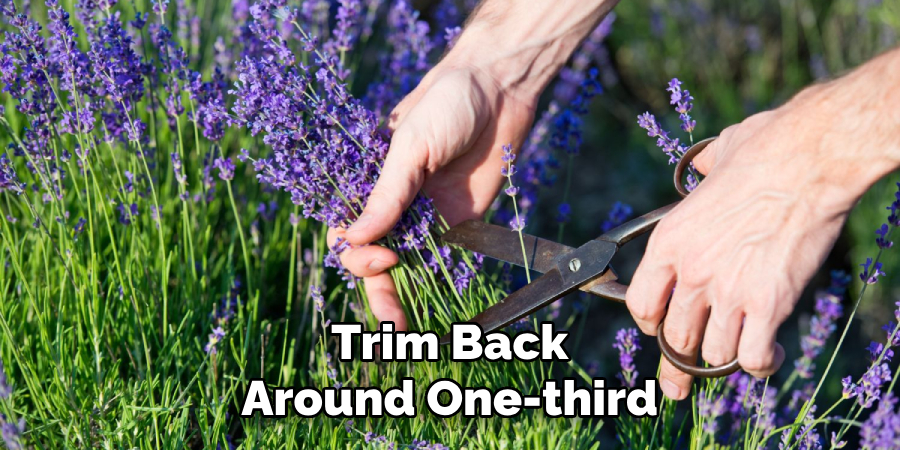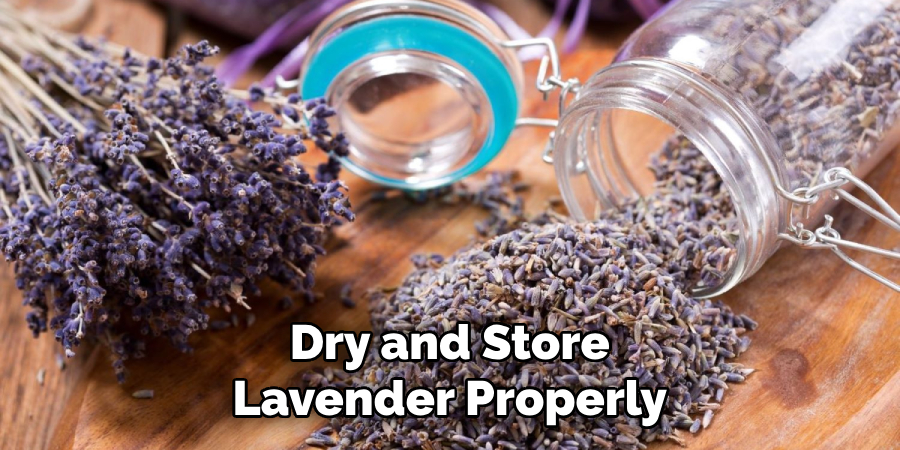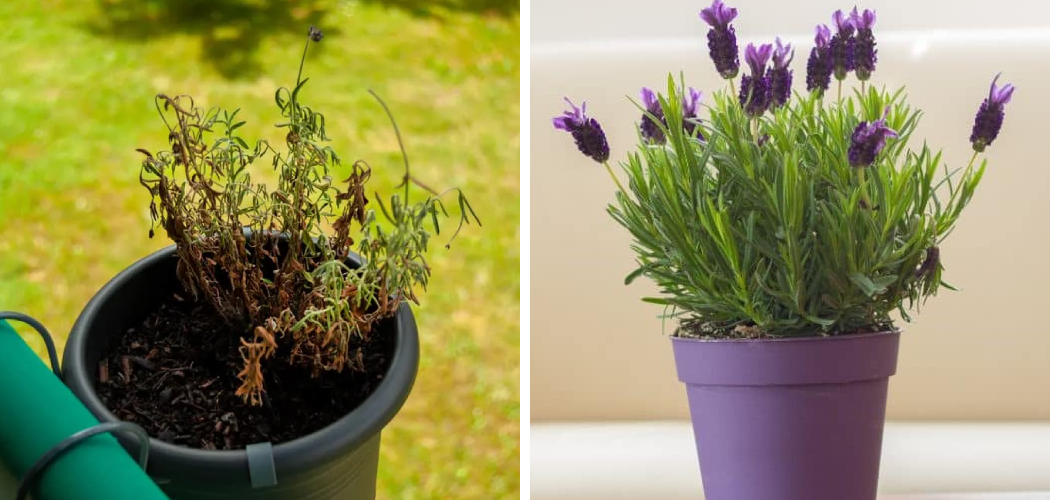To revive a lavender plant, provide it with adequate sunlight, well-draining soil, and regular watering. Additionally, prune the plant annually to encourage new growth and remove any dead or diseased branches.
A healthy lavender plant can enhance your garden with its beautiful fragrance and vibrant purple flowers. We will discuss the steps you can take to revive a struggling lavender plant and ensure its long-term health. By following these tips, you can enjoy a thriving lavender plant that adds beauty and tranquility to your outdoor space.

Overview Of Lavender Plant Revival
Lavender plants bring beauty and a soothing aroma to any garden or home. To ensure their longevity and vitality, it is important to know how to revive them properly. Reviving a lavender plant is essential for several reasons. Firstly, a healthy lavender plant can enhance the aesthetic appeal of your space.
Additionally, these plants are known for their therapeutic properties, such as reducing stress and promoting relaxation. Therefore, having a flourishing lavender plant can contribute positively to your overall well-being. To successfully revive a lavender plant, there are a few basic requirements to consider.
These include providing well-draining soil, ample sunlight, and regular pruning. Proper watering techniques, such as avoiding overwatering, are also crucial. By following these guidelines, you can give your lavender plant the best chance of thriving and enjoying its many benefits.
Assessing The Condition Of The Lavender Plant
Assess the lavender plant by checking the soil moisture level, inspecting the leaves for discoloration or wilting, and observing the overall plant structure and growth.
Determining The Cause Of Poor Health
Determining the cause of poor health is crucial when reviving a lavender plant. Overwatering or underwatering issues can lead to its decline. Examining the soil nutrient deficiencies is equally important. It helps identify the deficiencies and correct them accordingly. Moreover, recognizing pest infestations or diseases is essential for the plant’s revival.
Pest control measures must be taken to prevent further damage. To revive a lavender plant effectively, one must address these issues thoroughly.
How to Revive Lavender Plant: Step by Step Guide
Revive A Lavender Plant
To revive a lavender plant, you need to adjust your watering practices, ensuring not to overwater it. Improve the soil drainage by adding organic matter and perlite. To provide adequate sunlight, place the plant in a sunny location. Additionally, ensure proper airflow around the plant by spacing it appropriately from other plants.
Avoid planting lavender in areas with excessive humidity or stagnant air. Regularly prune the plant to promote healthy growth and remove any dead or diseased parts. Remember to keep an eye out for pests and treat them immediately. By following these steps, you can successfully revive your lavender plant and enjoy its beautiful fragrance and vibrant blooms once again.
Pruning And Trimming Techniques For Lavender Plants
Pruning and trimming are essential techniques for reviving lavender plants. Start by removing dead or damaged branches, as they hinder healthy growth. Promote new growth through selective pruning, cutting back branches that exhibit poor vigor. Shape the plant for improved aesthetics by trimming excess foliage.
Carefully assess each branch before making any cuts. Trim back around one-third of the plant to ensure its vitality. Avoid cutting too much, as this may cause stress to the lavender plant. Regularly check for any signs of disease or pests.

By following these pruning and trimming techniques, you can revitalize your lavender plants and enjoy their vibrant beauty for years to come.
Enhancing Soil Nutrition For Lavender Plants
To revive a lavender plant, it is crucial to enhance the soil nutrition. One effective method is to use organic fertilizers specifically designed for lavender plants. Another way is to apply compost or mulch to enrich the soil. This aids in providing the necessary nutrients for the plant’s growth.
Additionally, incorporating beneficial bacteria and mycorrhizal fungi can further improve soil health, promoting healthier lavender plants. These microorganisms establish a symbiotic relationship with the plant’s roots, aiding in nutrient absorption and overall plant vitality. By following these practices, the lavender plant will have access to the essential nutrients it needs to thrive and flourish.
So, give your lavender plant the nutrition it deserves and revive it back to its vibrant state.
Dealing With Common Pests And Diseases
Dealing with common pests and diseases is essential to revive a lavender plant. One of the challenges is identifying and treating lavender plant pests. Be vigilant in recognizing symptoms of fungal or bacterial infections, such as yellowing leaves or black spots.
Implement natural pest control methods like using insecticidal soap or neem oil. Encourage beneficial insects like ladybugs or lacewings to keep pest populations in check. Regularly inspect your lavender plants to catch any issues early on. Remember to provide proper care and maintenance, including watering, pruning, and ensuring good air circulation.
By proactively addressing pests and diseases, you can revive your lavender plant and enjoy its fragrant blooms once again. Keep a close eye on your lavender plants to catch any minor issues before they become major problems.
Harvesting And Using Lavender
Harvesting lavender flowers should be done at the right time and with the proper techniques. Learning how to dry and store lavender properly is crucial for preserving its fragrance and benefits. Apart from using lavender in traditional ways, such as in sachets or potpourri, there are creative ways to incorporate it into cooking, crafts, and skincare routines.

In cooking, lavender adds a unique flavor to dishes like desserts, beverages, and even savory recipes. It can also be infused into oils, soaps, and candles for crafts, or used in homemade skincare products for its calming and soothing properties.
With its beautiful aroma and versatility, lavender is a plant worth reviving and exploring its many possibilities.
Frequently Asked Questions For How To Revive Lavender Plant
How Often Should I Water My Lavender Plant?
Water your lavender plant once a week. Make sure the soil is well-draining to prevent root rot. Avoid overwatering, as lavender prefers drier conditions.
How Do I Prune My Lavender Plant?
Prune your lavender plant in spring or fall. Trim back about one-third of the plant’s height, cutting just above a set of leaves. This will promote new growth and maintain the plant’s shape.
Can I Grow Lavender Indoors?
Yes, you can grow lavender indoors. Choose a sunny spot with at least six hours of sunlight. Use a well-draining potting mix and water the plant sparingly to prevent root rot.
Why Are The Leaves Of My Lavender Turning Brown?
Brown leaves on lavender can indicate overwatering or poor drainage. Make sure the soil is well-draining and allow the plant to dry out between waterings. Also, avoid watering the leaves, as this can lead to fungal diseases.
How Do I Revive A Dying Lavender Plant?
To revive a dying lavender plant, assess the watering and drainage conditions. Adjust watering to avoid overhydration and improve drainage if necessary. Trim back any dead or brown foliage and provide the plant with adequate sunlight.
Conclusion
To successfully revive a lavender plant, it is crucial to understand its specific needs and provide the necessary care. By following the steps outlined in this guide, you can confidently bring your lavender plant back to life. First and foremost, ensure that the plant is in a well-draining soil and receives plenty of sunlight.
Regularly prune the plant to encourage new growth and remove dead or diseased branches. Remember to water your lavender plant conservatively, as overwatering can lead to root rot. In addition, adding organic matter and fertilizer can provide the necessary nutrients for healthier growth.
Be vigilant in monitoring pests and diseases, promptly addressing any issues that arise. Finally, proper winter care is essential to protect the plant from cold temperatures. With a little patience and attention, you can bring your lavender plant back to its vibrant, aromatic glory.
Remember, the key is providing the right conditions and consistently tending to its needs. So go ahead and revive your lavender plant, and enjoy the beauty and fragrance it brings to your garden.

